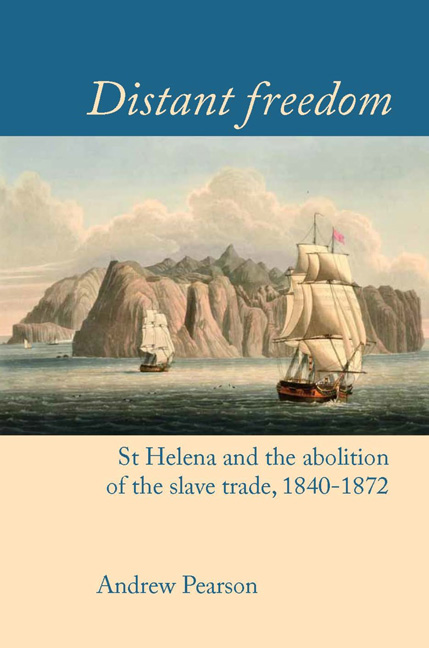Book contents
- Frontmatter
- Dedication
- Contents
- Figures
- Tables
- Acknowledgements
- Introduction
- Map
- 1 A Place of Immense Advantage
- 2 London and Jamestown
- 3 Sailortown
- 4 Life and Death in the Depots
- 5 ‘All, all, without avail’
- 6 After ‘Liberation’
- 7 Island Lives
- Conclusion
- Appendix 1 Liberated Africans Captured aboard Slave Ships: Cases Tried at Freetown, Luanda, Cape Town and St Helena, 1836–68
- Appendix 2 Prizes Adjudicated by the Vice-Admiralty Court of St Helena
- Appendix 3 Liberated African Emigration from St Helena
- Appendix 4 Emigrant Voyages from St Helena
- Bibliography
- Index
Conclusion
- Frontmatter
- Dedication
- Contents
- Figures
- Tables
- Acknowledgements
- Introduction
- Map
- 1 A Place of Immense Advantage
- 2 London and Jamestown
- 3 Sailortown
- 4 Life and Death in the Depots
- 5 ‘All, all, without avail’
- 6 After ‘Liberation’
- 7 Island Lives
- Conclusion
- Appendix 1 Liberated Africans Captured aboard Slave Ships: Cases Tried at Freetown, Luanda, Cape Town and St Helena, 1836–68
- Appendix 2 Prizes Adjudicated by the Vice-Admiralty Court of St Helena
- Appendix 3 Liberated African Emigration from St Helena
- Appendix 4 Emigrant Voyages from St Helena
- Bibliography
- Index
Summary
On 6 July 1868, an unnamed and empty vessel, prize to HMS Speedwell, was tried in St Helena's Vice-Admiralty court and condemned for its engagement in slave trading. By this date the tailing off of the trade had long been obvious to the St Helenians. It had been 18 months since the court had last sat, and the preceding interval had been nearly two years. This vessel, however, would be the last, and with the court's judgement the island's involvement in suppression came to an end.
Lemon Valley had long since ceased to be used by the Liberated African Establishment. The buildings commandeered for the depot were returned to their owners in 1844, several of whom pursued the colonial government for compensation for damage sustained during their enforced absence. The valley continued to be sparsely occupied through to the mid-twentieth century, but has been totally abandoned for many years. All the while its ecological transformation has continued, dense thickets of wild mango and prickly pear having taken over most of the valley floor, supplanting the meadow and creating a landscape that is much more closed-in and claustrophobic than was the case 150 years ago.
The remnants of the depot still survive amidst this landscape; damaged by time and smothered by vegetation, but legible nonetheless. The ship hulks anchored off shore and the multitude of tents – all key elements of the depot – are, of course, long gone. At the bay, one of the barracks remains roofed and habitable, while the ruins of the second, and of a cottage and the fishermen's hovels, are identifiable. Chamberlain's Cottage is now a roofless shell, but the walls of the house, the gardens and the irrigation system that supplied them directly conform to the written accounts of the 1840s. One can still stand in the main house and look through its windows to the distant ocean, past the seven great Indian fig trees which once framed George McHenry's view.
In Rupert's Valley, the depot buildings were kept in place for a number of years, in case the slave trade should once again resume. This never happened, but the hospital was briefly revived in 1872, when sick sailors from the Swedish merchant ship Norrkoping were admitted there.
- Type
- Chapter
- Information
- Distant FreedomSt Helena and the Abolition of the Slave Trade, 1840–1872, pp. 271 - 277Publisher: Liverpool University PressPrint publication year: 2016



